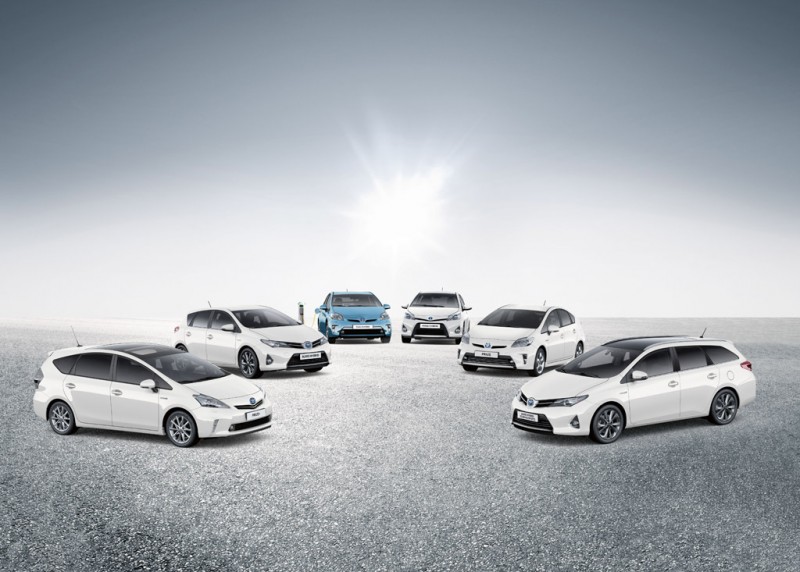Toyota has officially sold more than six million hybrid vehicles in their cumulative sales as of the end of Demcember 2013. This follows on from their previous announcement at 5 million units, just nine months before – making the final million units the fastest selling hybrid vehicles.
Toyota has been active in the hybrid field since 1997 when it launched it’s first iteration of the Prius, a brand name that has gone through the stages of interest, hate, loathing, respect and more recently desire. We’re referring to the eco bashing that went on toward the early stages of development and the relatively poor sales of the first iteration. The car was simply unloved. The second generation changed all that with many applauding it’s altogether different design direction and interesting technology, but loathed the way eco friendly people and celebrities in particular seemed to think it was the car to own in order to have a ‘save the world’ image… which didn’t fool too many people. More recently, as hybrid technology is backed by all major automotive players and [at long last] auto journalists are recognising the benefits adding an electric motor to a drivetrain can provide, things are looking up for the hybrid and they’re finally desirable with the likes of luxury brands such as Toyota’s own Lexus contributing heavily to the six million sales figures.
Toyota didn’t actually start hybrids with a car though, and it should be remembered that it all started with a hybrid bus; beating the Prius mk1 to production by a few months.
Currently, there are no less than 24 separate hybrid models available from the Toyota and Lexus stable, available to 80 countries worldwide. Toyota isn’t resting on their laurels though and plans to introduce a further 15 new or refreshed hybrid models to market by the end of 2015.
For those who love numbers, Toyota have estimated that approximately 41 million tonnes of CO2 have been saved, in comparison to if the six million cars had been conventional non-hybrid cars and on the same basis, around 15,000 million litres of petrol would have been saved.
It’s well and good to float massive numbers around, but Toyota says this is the whole point and they’ve realised that their technology in hybrids can only succeed in having a positive effect on the environment cumulatively, rather than on an individual basis.
The below table shows cumulative sales of hybrids for any given year. Figures are shown in thousands.
| Year |
Global |
Europe |
UK |
| 1997 |
0.3 |
– |
– |
| 1998 |
17.6 |
– |
– |
| 1999 |
15.2 |
– |
– |
| 2000 |
19.0 |
0.7 |
0.184 |
| 2001 |
36.9 |
2.3 |
0.622 |
| 2002 |
41.3 |
0.8 |
0.291 |
| 2003 |
53.2 |
0.8 |
0.370 |
| 2004 |
134.6 |
8.1 |
1.595 |
| 2005 |
234.9 |
23.3 |
5.279 |
| 2006 |
312.5 |
36.0 |
8.343 |
| 2007 |
429.4 |
48.9 |
13.195 |
| 2008 |
429.7 |
48.9 |
12.809 |
| 2009 |
530.1 |
54.7 |
11.190 |
| 2010 |
690.1 |
70.1 |
16.432 |
| 2011 |
628.9 |
82.8 |
17.545 |
| 2012 |
1,219.0 |
106.8 |
19.905 |
| 2013 |
1,279.4 |
153.0 |
24.649 |
| TOTAL |
6,072.9 |
646.6 |
132.409 |
Source; Toyota

